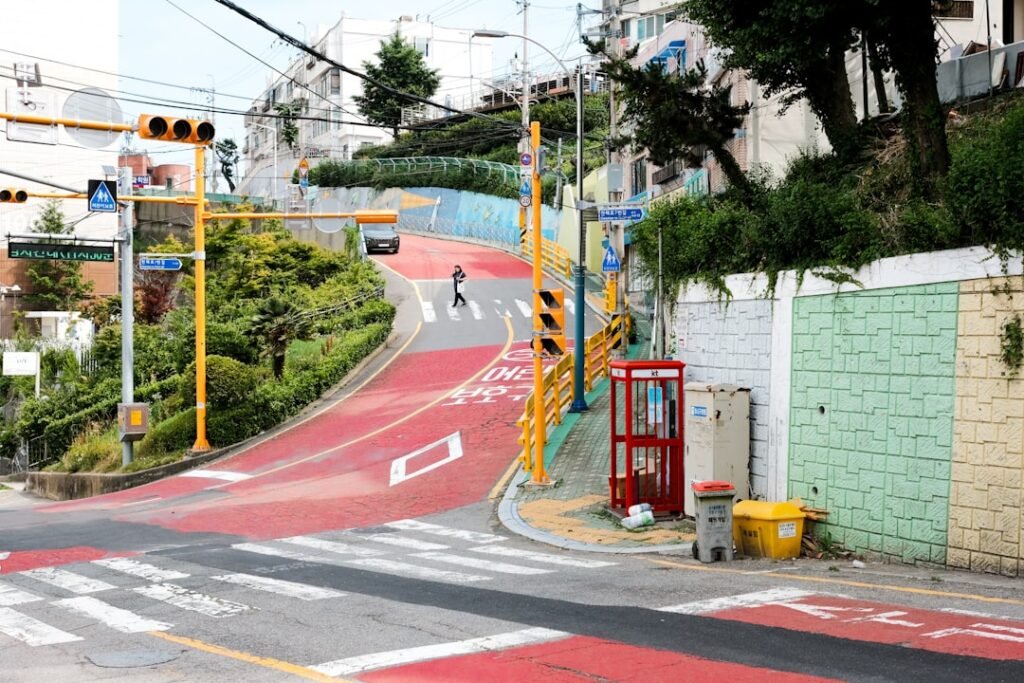

The Grammar of Expressing Intentions with -(으)려고 하다 (-euryeogo hada)
The Korean language is rich in its grammatical structures, each serving a unique purpose in communication. One such structure is -(으)려고 하다 (-euryeogo hada), which is primarily used to express intentions or plans. This construction is formed by attaching the suffix -(으)려고 to the verb stem, followed by 하다, which means “to do.” The use of this grammatical form indicates that the speaker has a specific intention or is planning to perform a certain action in the near future.
It is essential for learners of Korean to grasp this concept, as it plays a significant role in everyday conversations and interactions. In practical terms, understanding -(으)려고 하다 allows speakers to articulate their goals and aspirations clearly. For instance, when someone says “영화를 보려고 해요” (I intend to watch a movie), it conveys not just the action of watching a movie but also the speaker’s intention behind it.
This nuance is crucial in Korean, where intentions often carry as much weight as the actions themselves. Thus, mastering this grammatical structure can significantly enhance one’s ability to communicate effectively in various contexts. Begin your Korean studies at the NLS language school, right here in Oslo.
Table of Contents
ToggleSummary
- Understanding the use of -(으)려고 하다 (-euryeogo hada) in Korean grammar:
- It is used to express intentions, plans, and future actions in Korean.
- Forming intentions and plans with -(으)려고 하다 (-euryeogo hada):
- It is formed by attaching -(으)려고 하다 to the stem of a verb or an adjective.
- Expressing future actions with -(으)려고 하다 (-euryeogo hada):
- It indicates the speaker’s intention to do something in the future.
- Conveying determination and commitment using -(으)려고 하다 (-euryeogo hada):
- It can convey a strong determination or commitment to a future action.
- Differentiating between -(으)려고 하다 (-euryeogo hada) and -(으)려고 해요 (-euryeogo haeyo):
- The former is the plain form, while the latter is the polite form.
- Using -(으)려고 하다 (-euryeogo hada) in formal and informal contexts:
- It can be used in both formal and informal situations, depending on the level of politeness required.
- Common mistakes and pitfalls when using -(으)려고 하다 (-euryeogo hada):
- Misusing the plain and polite forms, and incorrect verb/adjective stems are common mistakes.
- Examples of sentences using -(으)려고 하다 (-euryeogo hada) in everyday conversation:
- “내일은 공부하려고 해요” (I plan to study tomorrow) is an example of using the polite form in a sentence.
- Pairing -(으)려고 하다 (-euryeogo hada) with other grammar structures for nuanced meanings:
- It can be paired with other grammar structures to express more nuanced meanings and intentions.
- How to practice and improve the use of -(으)려고 하다 (-euryeogo hada) in Korean language learning:
- Practice using it in various contexts and seek feedback from native speakers to improve usage.
- Tips for mastering the usage of -(으)려고 하다 (-euryeogo hada) in speaking and writing:
- Pay attention to the context and level of politeness required, and practice regularly to master its usage.
Forming intentions and plans with -(으)려고 하다 (-euryeogo hada)
When it comes to forming intentions and plans, -(으)려고 하다 serves as a vital tool for expressing what one aims to do. This construction allows speakers to convey their future actions with clarity and purpose. For example, if someone says “내일 친구를 만나려고 해요” (I plan to meet my friend tomorrow), it not only indicates the action of meeting but also highlights the speaker’s intention to do so.
This distinction is particularly important in Korean culture, where intentions often reflect one’s commitment and seriousness about an action. Moreover, using -(으)려고 하다 can also help in setting expectations in conversations. When discussing plans with friends or family, articulating intentions can lead to more meaningful interactions.
For instance, if a person states “여행을 가려고 해요” (I intend to go on a trip), it opens up opportunities for further discussion about travel plans, preferences, and even potential companionship. This aspect of communication fosters a sense of connection and understanding among speakers, making it an invaluable part of conversational Korean.
Expressing future actions with -(으)려고 하다 (-euryeogo hada)

In addition to expressing intentions, -(으)려고 하다 is also instrumental in conveying future actions. This grammatical structure allows speakers to indicate what they are planning to do in the near future, thus providing clarity about their upcoming activities. For instance, when someone says “저는 한국에 가려고 해요” (I am going to Korea), it not only informs the listener about the action but also implies that the speaker has made a decision and is preparing for this journey.
The ability to express future actions using this construction is particularly useful in various contexts, such as making arrangements or discussing schedules. For example, if two friends are planning a weekend outing, one might say “주말에 바다에 가려고 해요” (I plan to go to the beach this weekend). This statement not only communicates the action but also sets a timeframe for it, allowing both parties to coordinate their plans effectively.
Thus, mastering this aspect of -(으)려고 하다 can significantly enhance one’s ability to navigate social situations and make plans with others.
Conveying determination and commitment using -(으)려고 하다 (-euryeogo hada)
Another important facet of using -(으)려고 하다 is its ability to convey determination and commitment. When speakers use this construction, they often imply a sense of resolve regarding their intentions. For instance, saying “열심히 공부하려고 해요” (I am determined to study hard) not only expresses the intention to study but also reflects the speaker’s commitment to achieving their academic goals.
This nuance adds depth to the conversation and can inspire confidence in listeners regarding the speaker’s dedication. Furthermore, conveying determination through this grammatical structure can also serve as a motivational tool for both the speaker and the listener. When someone articulates their intentions with conviction, it can encourage others to pursue their own goals with similar fervour.
For example, if a friend shares their intention to “운동하려고 해요” (I plan to exercise), it may inspire others in the group to join them or share their own fitness aspirations. Thus, using -(으)려고 하다 not only communicates personal intentions but also fosters a supportive environment for collective growth and motivation.
Differentiating between -(으)려고 하다 (-euryeogo hada) and -(으)려고 해요 (-euryeogo haeyo)
While both -(으)려고 하다 and -(으)려고 해요 serve similar functions in expressing intentions and plans, there are subtle differences between them that learners must understand. The primary distinction lies in the level of formality and context in which each form is used. The base form -(으)려고 하다 is more neutral and can be used in various contexts, while -(으)려고 해요 is a polite form that is typically used in everyday conversations.
For instance, if someone were to say “저는 공부하려고 해요” (I intend to study), they are using the polite form suitable for conversations with acquaintances or elders. In contrast, if they were speaking among close friends or in a casual setting, they might simply say “공부하려고 해” (I intend to study), omitting the polite ending. Understanding when to use each form is crucial for effective communication in Korean, as it reflects respect for social hierarchies and relationships.
Moreover, this differentiation can also impact how intentions are perceived by listeners. The polite form often conveys a sense of consideration for the listener’s feelings or status, while the neutral form may come across as more direct or informal. Therefore, mastering these nuances can greatly enhance one’s ability to navigate social interactions in Korean-speaking environments.
Using -(으)려고 하다 (-euryeogo hada) in formal and informal contexts

The versatility of -(으)려고 하다 allows it to be employed in both formal and informal contexts, making it an essential component of Korean grammar. In formal situations, such as business meetings or academic presentations, using this construction can convey professionalism and clarity regarding one’s intentions. For example, stating “저는 이 프로젝트를 완료하려고 합니다” (I intend to complete this project) demonstrates not only intent but also respect for the formal setting.
Conversely, in informal contexts among friends or family, this structure can be adapted to suit casual conversations. For instance, saying “내일 영화 보려고 해” (I plan to watch a movie tomorrow) maintains the same meaning while adopting a more relaxed tone appropriate for informal interactions. This adaptability makes -(으)려고 하다 a valuable tool for learners who wish to communicate effectively across various social settings.
Additionally, understanding how to switch between formal and informal usage of this construction can enhance one’s fluency in Korean. It allows speakers to adjust their language according to the audience and context, thereby fostering better relationships and clearer communication. As such, learners should practice using -(으)려고 하다 in both formal and informal scenarios to develop a well-rounded command of the language.
Common mistakes and pitfalls when using -(으)려고 하다 (-euryeogo hada)
Despite its importance in Korean grammar, learners often encounter common mistakes when using -(으)려고 하다. One frequent error involves misplacing the suffix or using it with incorrect verb stems. For instance, some learners might mistakenly say “가려고 하다” (to intend to go) without properly conjugating the verb stem based on tense or politeness level.
Such errors can lead to confusion or miscommunication, highlighting the need for careful attention to detail when constructing sentences. Another common pitfall is failing to differentiate between formal and informal contexts when using this structure. Learners may inadvertently use the polite form in casual settings or vice versa, which can create awkwardness in conversations.
For example, saying “저는 내일 파티에 가려고 해요” (I intend to go to the party tomorrow) among close friends may come across as overly formal. To avoid these mistakes, learners should practice identifying appropriate contexts for using -(으)려고 하다 and pay close attention to verb conjugations.
Examples of sentences using -(으)려고 하다 (-euryeogo hada) in everyday conversation
To solidify understanding of -(으)려고 하다, it is helpful to explore practical examples that illustrate its usage in everyday conversation. For instance, one might say “저는 저녁을 만들려고 해요” (I plan to make dinner). This sentence clearly communicates the speaker’s intention while providing context for their actions later in the day.
Another example could be “그녀는 새로운 직업을 찾으려고 해요” (She intends to find a new job). Here, the construction effectively conveys her goal while allowing for further discussion about her job search process. These examples demonstrate how -(으)려고 하다 can be seamlessly integrated into daily conversations, making it an essential tool for expressing intentions and plans.
Pairing -(으)려고 하다 (-euryeogo hada) with other grammar structures for nuanced meanings
To enhance communication further, learners can pair -(으)려고 하다 with other grammar structures for more nuanced meanings. For instance, combining it with -고 싶다 (-go sipda), which means “to want,” allows speakers to express desires alongside intentions: “저는 한국어를 배우고 싶어서 공부하려고 해요” (I want to learn Korean, so I plan to study). This combination adds depth to the statement by linking desire with intention.
Additionally, pairing -(으)려고 하다 with time expressions can provide clarity regarding when an action will take place: “내일 친구를 만나려고 해요” (I plan to meet my friend tomorrow). Such combinations enrich conversations by providing context and detail that enhance understanding between speakers.
How to practice and improve the use of -(으)려고 하다 (-euryeogo hada) in Korean language learning
To effectively practice and improve the use of -(으)려고 하다, learners should engage in various activities that reinforce their understanding of this grammatical structure. One effective method is through conversation practice with native speakers or fellow learners. Engaging in dialogues where participants share their intentions or plans can help solidify comprehension while providing real-time feedback on usage.
Additionally, writing exercises can be beneficial for reinforcing grammar skills. Learners might keep a journal where they document their daily intentions using -(으)려고 하다: “오늘은 운동하려고 해요” (I plan to exercise today). This practice not only helps internalise the structure but also encourages reflection on personal goals and aspirations.
Tips for mastering the usage of -(으)려고 하다 (-euryeogo hada) in speaking and writing
Mastering the usage of -(으)려고 하다 requires consistent practice and attention to detail in both speaking and writing. One effective tip is to immerse oneself in Korean media—such as films, dramas, or podcasts—where this grammatical structure is frequently used. Listening attentively can help learners recognise patterns and nuances associated with expressing intentions.
Furthermore, seeking feedback from teachers or language partners can provide valuable insights into areas for improvement. Constructive criticism can help identify common mistakes and refine usage over time. Lastly, regular practice through conversation groups or language exchange programmes can foster confidence in using -(으)려고 하다 naturally within various contexts.
In conclusion, understanding and mastering -(으)려고 하다 is essential for effective communication in Korean. By grasping its nuances and applications across different contexts—whether expressing intentions, plans, or determination—learners can significantly enhance their conversational skills. As they continue their language journey at institutions like NLS Norwegian Language School in Oslo, students will find that courses focusing on such grammatical structures will provide them with invaluable tools for navigating everyday interactions with confidence and clarity.
If you want to learn Norwegian, you can register for classes here. We look forward to hearing from you and helping you become fluent in Norwegian.





